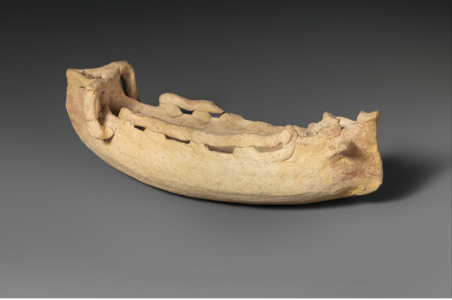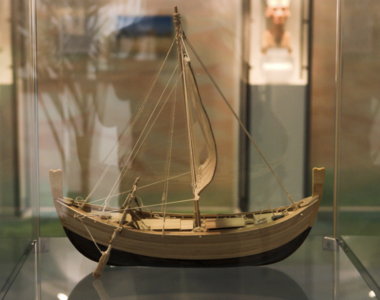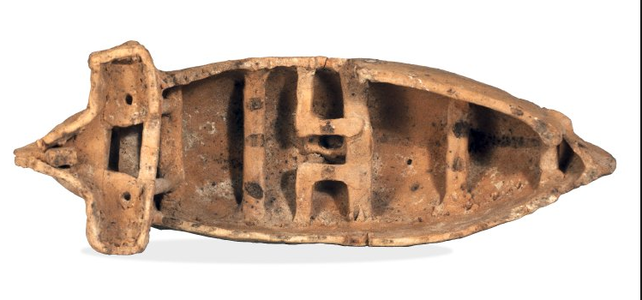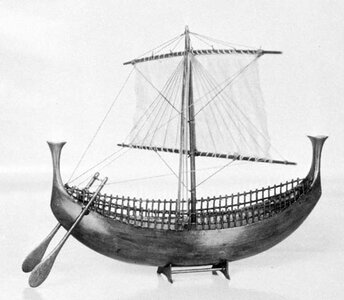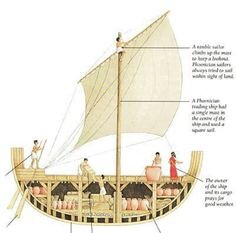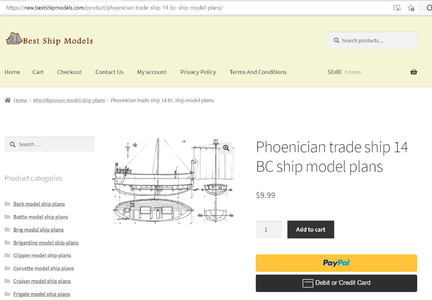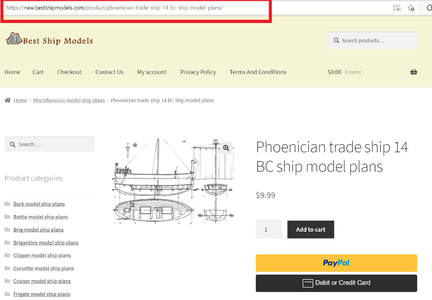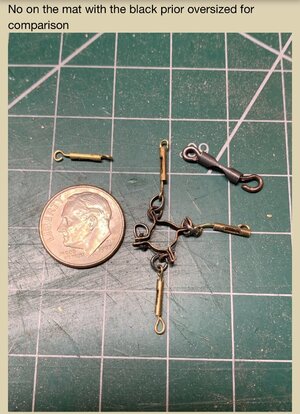Long after the prior status photos and work is my rather sorry looking work as of 29 December. In my case as evidenced, slow work is not necessarily good work. It is with some reluctance that I'll put up the current status where I know there are a lot of poorly done items but they are what my hands and poor eye sight (singular to one only) produces. Lots of touchups as I continually see things that I didn't see before.
Here is the hand painted hull and lines with the rough planking that is visible in the old photos. . . not a filled in and smoothed out showcase model:
View attachment 202230
Then some decking photos with the more random plank lengths terminating on some of the frames and fasteners before I knew that they were probably plugged over and not visible as with Bluenose II photos that I recently found:
View attachment 202231View attachment 202232View attachment 202233
Transom with YQ's pdf file printed and applied after several runs to get it to scale.
View attachment 202234
Next hull wise will be the rudder once can figure out how to hold the 1/16th inch brass strips in place to locate the through rudder fastener rods, all aligned as well as learning how to solder the pintel and a tubular gudgeon. For breaks I can always cut and taper down the masts and booms.
Somewhere in the future this schooner may be completed but I don't know when; just trusting that it will. Rich




